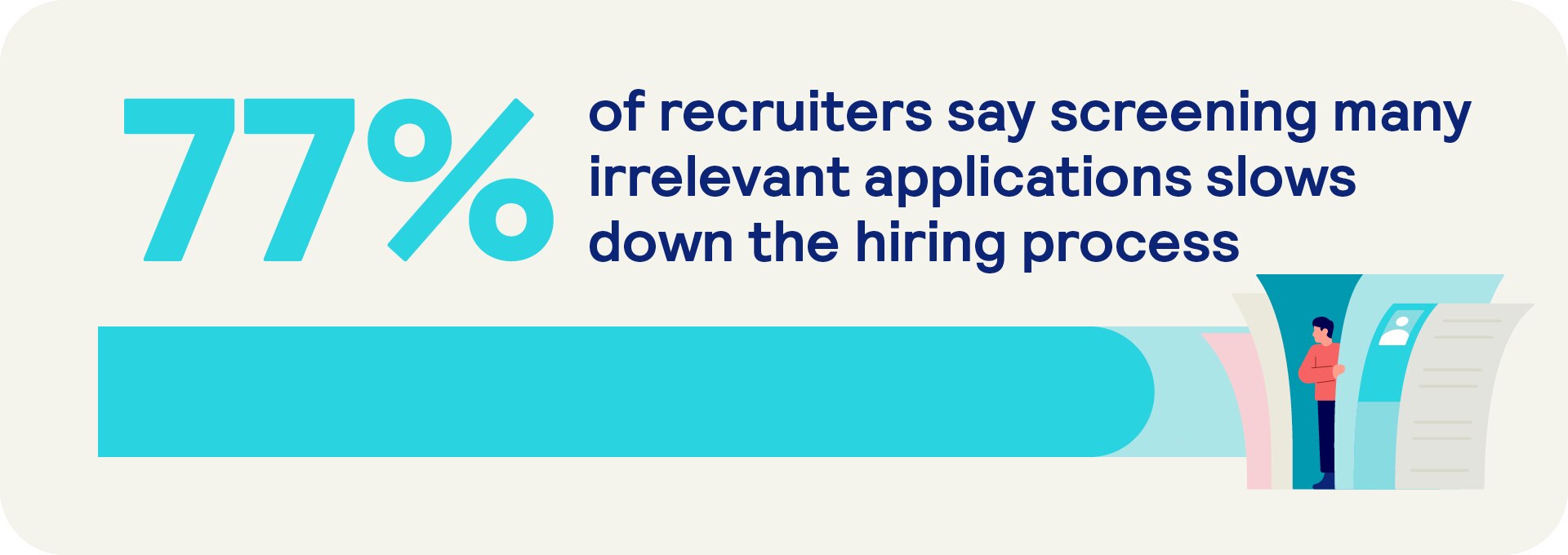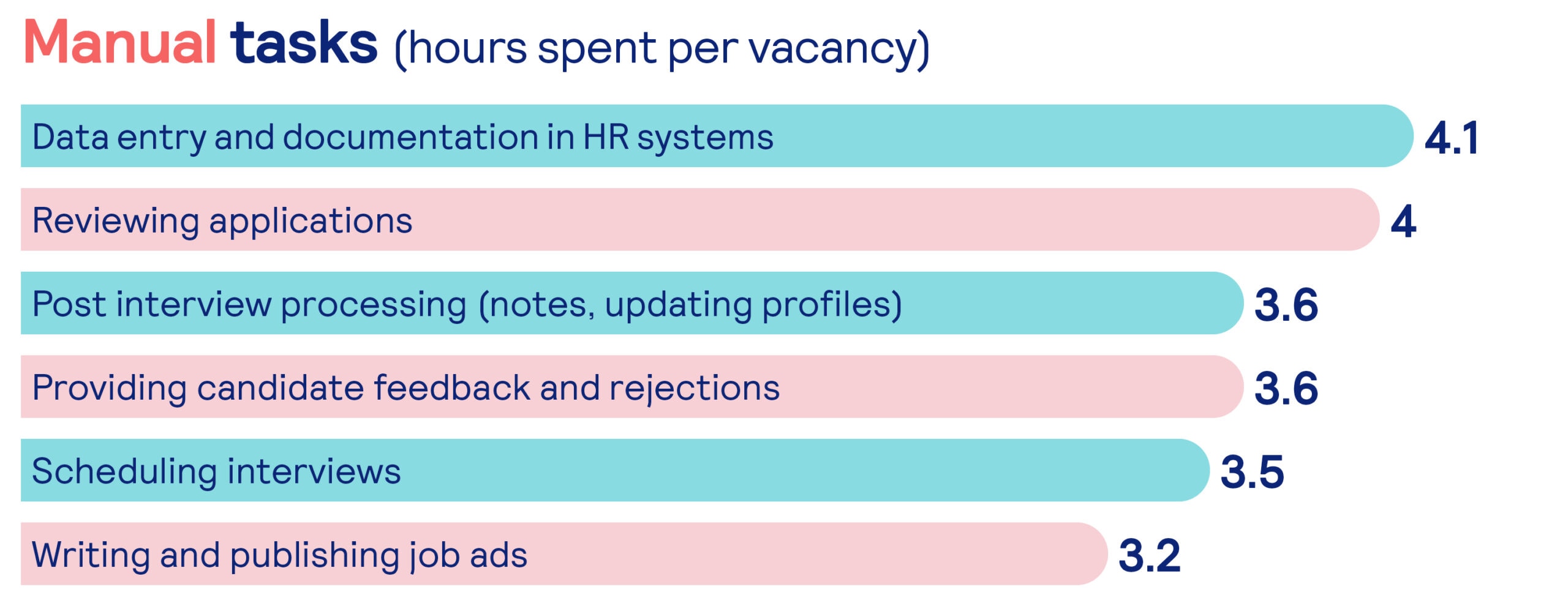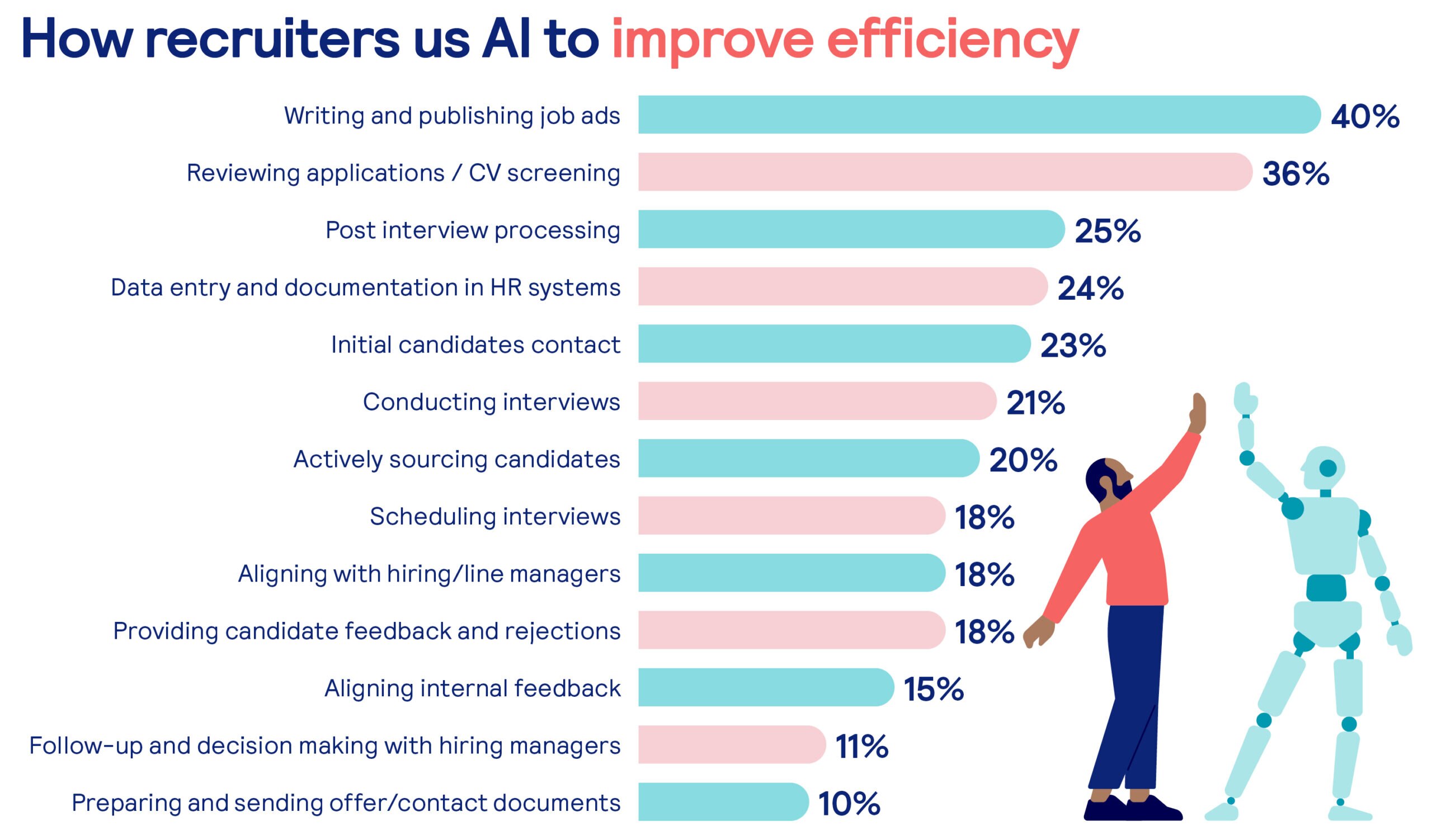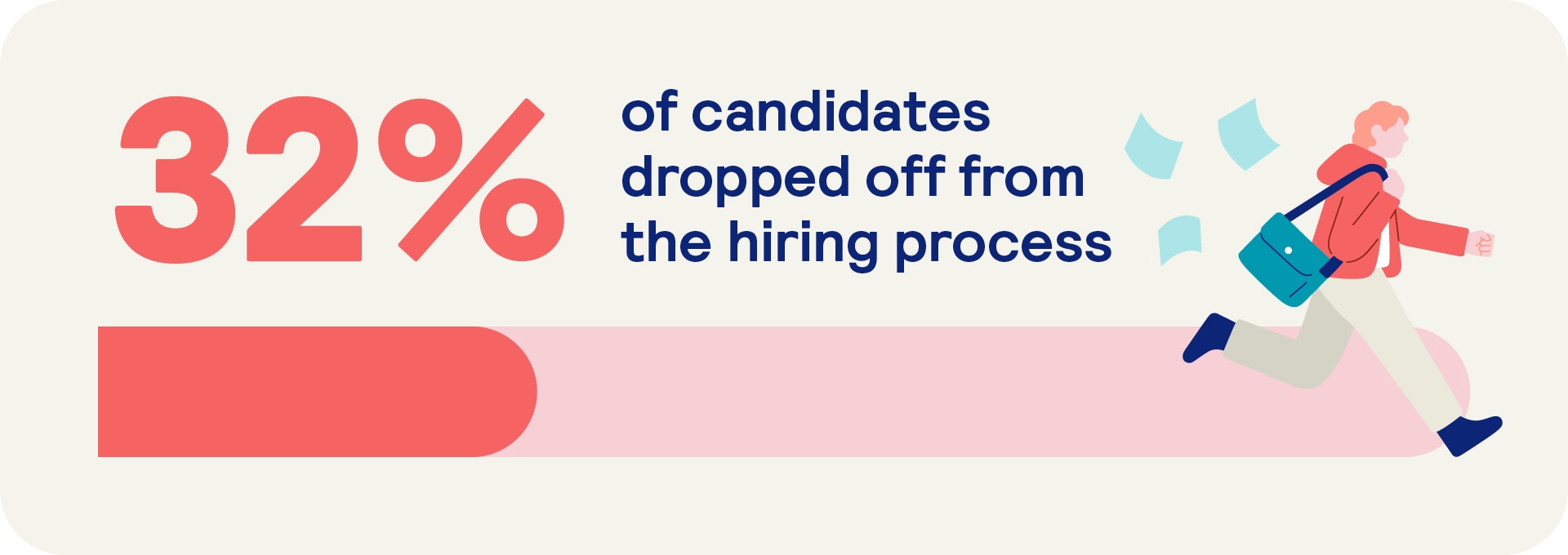With the speed at which the job market evolves in Northern Ireland, recruiters often feel pressured to fill roles quickly. Yet, when they receive hundreds of applications, weeding out top talent takes time.
We found that 77% of recruiters say screening many irrelevant applications is slowing down the hiring process. Recruiters also spend over 3 days per vacancy on manual tasks, costing businesses £29.34k per recruiter, per year.*
Our latest research dives into the ins and outs of hiring, uncovering the inefficiencies slowing down recruiters and causing candidates to drop off. In this article, we’ll share tips to cut hiring time and increase efficiency in the hiring process.
Get started by downloading our pre-screening questions to help you identify top talent quickly.
Disclaimer: Manual tasks take 22 hours per vacancy, assuming 7 hires are made per month, this comes up to 1,848 hours/year. Costing 1,848 X £15.88/hour (Avg, recruiter salary £30k per annum) = £29,345.28. Note: This is only an indicator of hidden costs in everyday recruiting and not an exact cost analysis.
Recruiters spend 4 hours per vacancy screening CVs


According to our research, recruiters are tasked with hiring for 7 roles each month and receive 30 applications per role.
It takes 4 hours per vacancy to filter out irrelevant applications and find the best candidates to move forward with.
As screening applications is a manual task for most, 77% of recruiters say it’s one of the top causes of a slow hiring process.
Improve application quality
Better application quality and relevancy mean less time spent on screening. Use structured pre-screening questions and matching logic to filter out irrelevant applications, especially for high-volume roles.
Top tasks that slow down recruiters


Looking at the top tasks that slow down recruiters, we can divide tasks into two categories: manual tasks and managing stakeholders.
While recruiters spend valuable time aligning with stakeholders on their requirements and feedback after interviews, manual work such as scheduling, entering post-interview notes and data entry is taking up too much time.
| Stakeholder management, Time spent per vacancy (hours) |
| Intake meeting with stakeholders, 3.4h |
| Aligning internal feedback, 2.9h |
| Follow-up and decision making with hiring managers, 3.6h |
| Manual tasks, Time spent per vacancy (hours) |
| Reviewing applications, 4h |
| Writing and publishing job ads, 3.2h |
| Data entry and documentation in HR systems, 4.1h |
| Post-interview processing (notes, updating profiles), 3.6h |
| Providing candidate feedback and rejections, 3.6h |
| Scheduling interviews, 3.5h |
Manual tasks cost recruiters over three days work of work per vacancy




The average time spent on manual tasks per vacancy is 22 hours or over three working days. Considering 7 hires are made per month, that’s £29,345 per recruiter, per year per recruiter on an average recruiters’ salary.
So, half of recruiters say manual tasks take too much time. That time can be spent on crucial candidate engagement and sourcing activities.
Especially as out of the 32% of candidates who have dropped out of the hiring process, 17% said the communication was unclear or slow.

Most recruiters are using AI to improve efficiency
Positively, 78% of recruiters are using AI in some capacity to improve hiring efficiency.
AI is already cutting hiring time when it comes to creating job ads, reviewing applications and data entry.
Recruiters that use AI can spend more time on vetting candidates, engaging with them through the process, sourcing candidates, and aligning with stakeholders.


41% of enterprise recruiters say their company has too many interview stages
According to recruiters, interviews are another time-drain in the hiring process.
-
43% of SMEs and 48% of large businesses say lengthy interviews slow down hiring.
-
Almost 1 in 3 (30%) SMEs and and 41% of large businesses say too many interview rounds are wasting time.
-
Recruiters in SMEs recommend 2 rounds max, with this number going up to 3 for large businesses.
Recruiters are also hampered by lengthy interviews (43%), poor availability of stakeholders (35% for SMEs, 26% for enterprise), no clearly defined processes (22% for SMEs, 33% for enterprise), follow up to job interviews (20%), and more.


When the hiring process takes too long and there is miscommunication or misaligned expectations along the way, it causes candidates to drop off. This worsens inefficiency as qualified candidates are lose even at the final stages of hiring.
Top reasons candidates dropped off:
-
I received a better offer (25%)
-
The compensation or benefits didn’t meet my expectations (19%)
-
The process involved too many steps (18%)
-
The process took too long (18%)
-
Communication was unclear or slow (17%)
A clear job description and establishing expectations in the first screening call can remove any questions marks and engage candidates. While keeping candidates in the look and a quick hiring process retains them.
When asked what would keep them in the process, candidates said: a shorter overall interview process (36%), faster feedback (35%), clear expectations for the process (34%), more transparency about role requirements (26%), less interview stages (26%), more transparency about salary (25%), a single point of contact (23%).
56% of candidates also say application status trackers would be beneficial.

About the study
We asked 100 recruiters and 824 jobseekers in Northern Ireland where they struggled to remain efficient in the hiring process.
The recruiter survey and the jobseeker survey were both done online between 25th of June and 3rd of July 2025.
The jobseeker survey is representative of the Northern Irish workforce in terms of gender and age.


